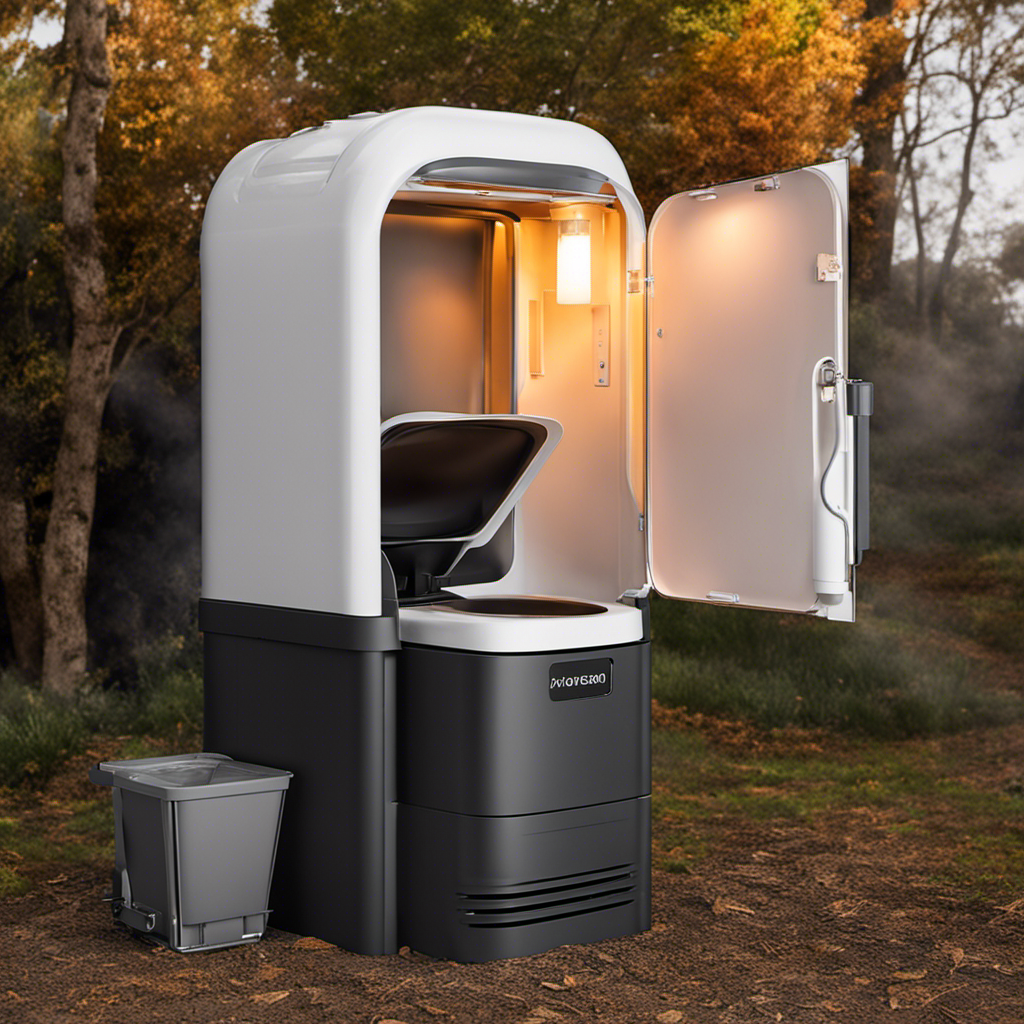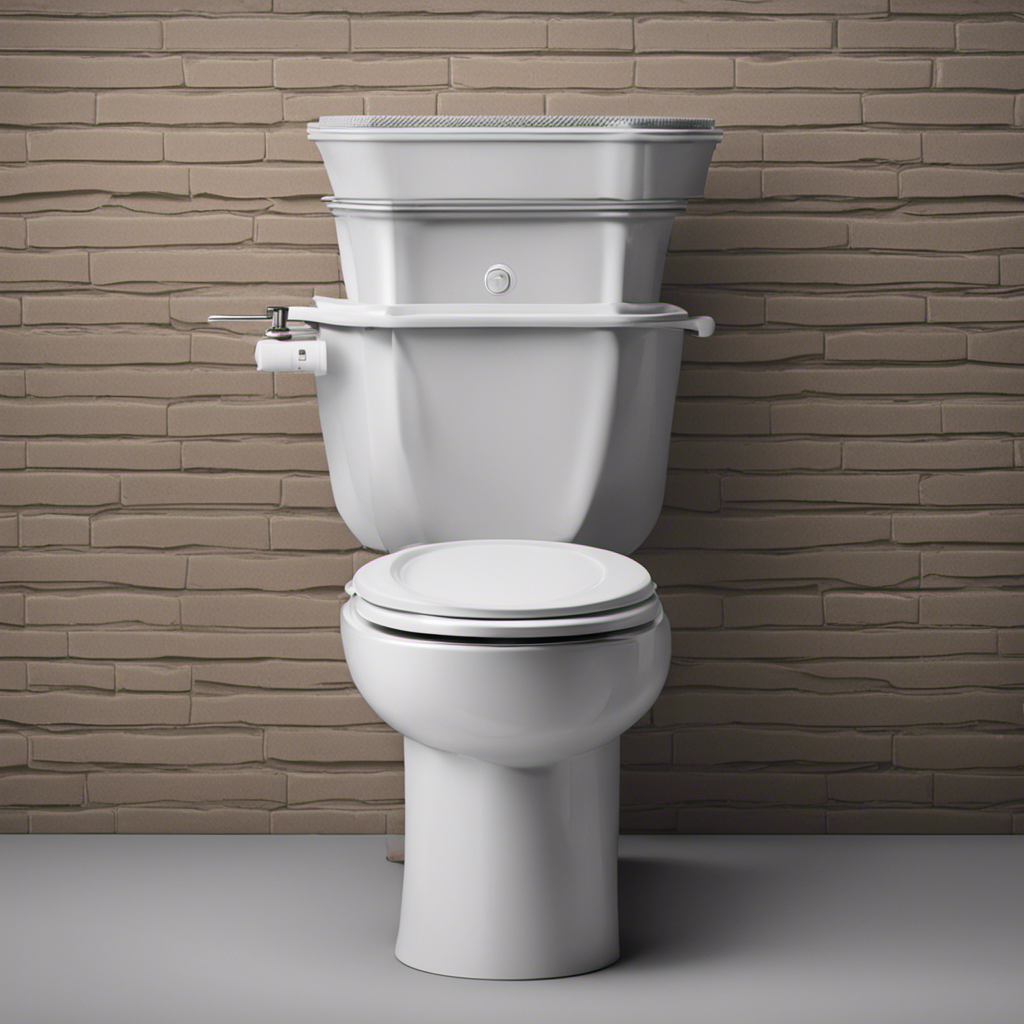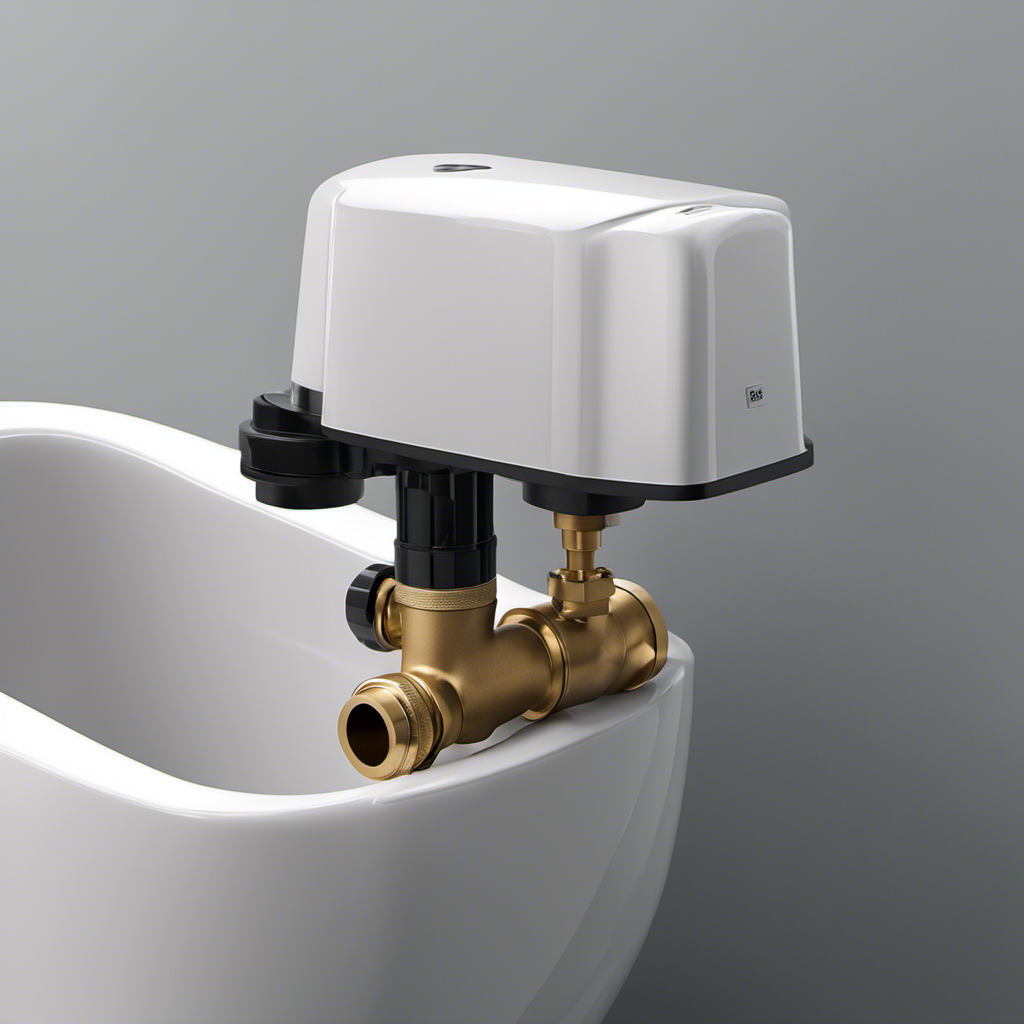As a curious homeowner, I’ve often wondered how an incinerating toilet works. It’s an intriguing concept – a toilet that doesn’t rely on water or sewage systems. Instead, it uses a heating and ignition mechanism to reduce waste to ashes.
In this article, we’ll delve into the intricate workings of an incinerating toilet, exploring the waste disposal process, energy consumption, and efficiency. We’ll also discuss the necessary maintenance and safety precautions that come with owning such a unique fixture.
Key Takeaways
- Incinerating toilets use high temperatures to burn waste into ash and vaporize liquid waste, minimizing the environmental impact of traditional flush toilets.
- The heating and ignition mechanism of incinerating toilets involves a high-temperature heating element that can reach temperatures as high as 1000 degrees Celsius, ensuring complete combustion of waste.
- The waste disposal process of incinerating toilets involves heating waste to high temperatures for complete combustion, destroying harmful pathogens and bacteria, and eliminating the need for water-based sewage systems.
- Incinerating toilets require significant energy due to the high temperature requirement, but renewable energy sources such as solar power or biogas can be utilized to improve efficiency and reduce environmental impact.
Incinerating Toilet Basics
An incinerating toilet uses high temperatures to burn waste into ash and vaporize liquid waste. This toilet technology is designed to minimize the environmental impact of traditional flush toilets.
When waste is deposited into the incinerating toilet, it is exposed to temperatures of up to 1000 degrees Celsius. This intense heat quickly breaks down the waste, turning solid waste into ash and evaporating liquid waste. The ash is then collected in a compartment for easy disposal. The vaporized liquid waste is released into the air as water vapor, leaving behind no harmful chemicals or pollutants.
This process eliminates the need for sewage infrastructure and reduces water usage, making incinerating toilets a more sustainable option for waste management.
Heating and Ignition Mechanism
To heat and ignite the waste in an incinerating toilet, you simply need to press the ignition button. Once activated, the heating mechanism begins its work.
Here’s how it operates:
-
Heating Temperature:
-
The incinerating toilet utilizes a high-temperature heating element, typically powered by electricity or gas.
-
This heating element can reach temperatures as high as 1000 degrees Celsius.
-
Waste Combustion:
-
When the ignition button is pressed, the heating element heats up rapidly.
-
As the waste enters the combustion chamber, the intense heat causes it to ignite and burn.
-
The high temperatures ensure complete combustion of the waste, reducing it to ashes and minimal residue.
The heating temperature and efficient waste combustion in an incinerating toilet provide a hygienic and eco-friendly solution for waste disposal.
Waste Disposal Process
The waste disposal process in an incinerating toilet involves heating the waste to high temperatures, causing it to burn completely and minimize residue. This process has several environmental impacts and offers an alternative waste management method.
Firstly, by burning the waste at high temperatures, harmful pathogens and bacteria are destroyed, reducing the risk of contamination. Additionally, the complete combustion of waste eliminates the need for water-based sewage systems, reducing water usage and the release of pollutants into water bodies.
Moreover, the incineration process creates ash as a byproduct, which can be safely disposed of without causing harm to the environment. Compared to traditional waste management methods, incinerating toilets provide a more sustainable and efficient solution, reducing the strain on natural resources and minimizing the ecological footprint.
Energy Consumption and Efficiency
Burning waste in an incinerating toilet requires a significant amount of energy. This energy consumption is due to the need for a high temperature to effectively burn the waste. However, there are ways to improve the efficiency of incinerating toilets and reduce their environmental impact.
-
Energy Consumption:
-
Incinerating toilets typically use electricity or natural gas to power the incineration process.
-
The energy required to reach the necessary temperatures can vary depending on the design and efficiency of the toilet.
-
Renewable Energy Sources:
-
To mitigate the environmental impact of incinerating toilets, it is important to consider using renewable energy sources to power them.
-
Solar power, wind power, or even biogas produced from organic waste can be utilized as renewable energy sources for incinerating toilets.
Maintenance and Safety Precautions
Regular maintenance is necessary for incinerating toilets to ensure safe and effective operation. These toilets use a unique process to dispose of waste, but like any other bathroom fixture, they require proper care to function optimally.
Here are some maintenance tips for incinerating toilets:
-
Empty the ashtray regularly to prevent build-up and maintain proper air flow.
-
Clean the toilet bowl and seat with mild disinfectant to keep it hygienic.
-
Inspect the heating elements and replace if damaged or worn out.
-
Check the exhaust system for any blockages or obstructions.
-
Use recommended odor control products to keep unpleasant smells at bay.
Frequently Asked Questions
Can an Incinerating Toilet Be Installed in Any Type of Building or Only in Specific Settings?
An incinerating toilet can be installed in various types of buildings, but there are specific installation requirements and maintenance considerations to keep in mind. These include proper ventilation, electrical connections, and regular ash disposal.
Are Incinerating Toilets Environmentally Friendly and Do They Produce Any Harmful Emissions?
Are incinerating toilets a sustainable solution for waste management? While they do eliminate the need for water and sewage systems, they produce harmful emissions and pose potential health risks due to the combustion process.
How Long Does It Take for an Incinerating Toilet to Incinerate Waste Completely?
The incinerating toilet efficiency depends on several factors that affect the time it takes to incinerate waste completely. These factors include the type of waste, temperature settings, and the capacity of the incinerating unit.
Can an Incinerating Toilet Handle Large Amounts of Waste at Once, Such as During a Party or Event?
During parties or events, incinerating toilets have the capacity to handle large amounts of waste. However, it is important to consider the maintenance requirements, as frequent emptying and cleaning may be necessary.
Are There Any Specific Precautions or Guidelines for Disposing of Ashes From an Incinerating Toilet?
When disposing of ashes from an incinerating toilet, it is important to take precautions. Health concerns can arise if the ashes contain harmful substances. Follow guidelines provided by the manufacturer for safe disposal.
Conclusion
In conclusion, the incinerating toilet is a marvel of modern technology. With its efficient heating and ignition mechanism, it quickly and effectively disposes of waste through a controlled incineration process. The energy consumption is surprisingly low, making it an environmentally friendly option.
Maintenance is minimal, ensuring a hassle-free experience. Safety precautions should always be followed to prevent accidents.
Overall, this revolutionary toilet is a game-changer in waste disposal, leaving traditional toilets in the dust. It’s a toilet so amazing, it’s like a fire-breathing dragon for your waste!










